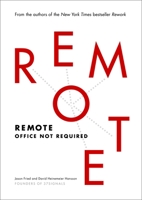Working Remotely: The Fairytale vs. Reality, and Hacks for Success
By Beth Clark • September 18, 2018
Working from Home: Why It's a Thing
If you're one of the 3.9 million full-time employees in the US who work remotely at least 50% of the time, you already know why telecommuting is a thing and what an ideal arrangement it can be. (Lest you doubt, 43% of the US workforce telecommutes at least part-time, not counting freelancers!) Unless you're a newbie, you also know that the struggle is all too real some days, so keep reading for insights, resources, and hacks to help you overcome the inevitable challenges and succeed. (But seriously, no judgement if you're reading this in your pj's.)
Working from home has gained momentum in the last decade in a variety of industries, for a plethora of reasons. Companies that offer, support, and encourage remote work report increased employee retention and engagement, reduced turnover, higher employee satisfaction, heightened productivity and autonomy, and other benefits, like an annual savings of $11,000 per remote employee. In over half of the top US metro areas, working from home is the #1 commute option of choice, with public transportation being #2.
Some factors contributing to telecommuting's popularity include technological evolution (which makes it more doable), a shift in the middle-class family dynamic (which makes more employees want and/or need to do it) and increased environmental awareness (which makes it greener in terms of both dollars and carbon footprint reduction).
The Fairytale: Telecommuting Perks to Love
Once upon a time, most telecommuters, especially introverts, likely had fairytale visions of the undeniably cool perks of working from home, such as:
- Better work-life balance and more time with family
- Increased freedom and autonomy, including the option to travel more that working from anywhere makes possible
- More control over work environment (i.e. fewer interruptions, softer lighting, no fire code prohibiting aromatherapy candles, etc.)
- No more being stuck in traffic for two hours a day or waiting for the bus in the rain
- Swapping a tie (or pantyhose – blech!) for jeans and t-shirts (or pj's…let's be honest)
- Being able to use your own bathroom (remember the mute button, please!)
The Reality: Challenges to Navigate
The flip side of the virtual office fairytale is obviously reality, which has a way of being, oh, real, so being prepared for it is your best strategy for success and keeping the magic alive.
Deep Space is Chilly
Working remotely makes you a satellite, so depending on how frequently you visit the mother ship, it can feel like you're lost in deep space sometimes. The truth is that when you're in orbit, you will be left out, miss out, and/or be the last one to know things sometimes, so when it happens, just remember the "out of sight, out of mind" adage, don't take it personally.
Perception Isn't Always Reality
One challenge for telecommuters is being the minority amidst tethered co-workers, particularly in companies new to the concept. Modifying the status quo is a big adjustment, so you might know you're working your hiney off curled up on the couch with your dog, but your colleagues may perceive your absence otherwise. Worse, they may resent your level of freedom, so your best tactics are to stay on task, communicate (communicate, communicate!), and deliver on time.
Unplugging is Essential
When work is home and home is work, differentiating between the two is critical to productivity and work-life balance. Ideally, your workspace should be an office with a door so that you can close it at the end of the day and transition from work to home. If physically separating the two isn't an option, do it mentally by designating a corner of your living area (or even just a spot on the couch) as a "work-only zone" and don't go there unless you're working. (Also, don't make your bedroom your office…your mental health will thank you later.) P.S. Even if you're a globetrotter who can work from anywhere, you still need regular days off and actual vacations, so take them!
Other Reality Tips
- Whatever your schedule, stop when it's time to stop…there's always one more thing to do, so unless your job requires being on duty 24/7, ya gotta walk away.
- Speaking of schedules, make one so that you're not at the mercy of distractions.
- To maximize productivity, only turn the TV on at the end of the day.
- If you need something that your company provides for onsite employees, ASK.
- Networking is harder for remote workers, so no matter how much you love your job and it loves you, keep your resume updated.
- Remote is a synonym of isolated, so make a conscious effort to stay connected with other humans (face-to-face, not on Facebook!)
Assorted Telecommuting Reads
- Remote: Office Not Required by Jason Fried and David Heinemeier Hansson
- 101 Tips for Telecommuters: Successfully Manage Your Work, Team, Technology, and Family by Debra A. Dinnocenzo
- The Virtual Office Survival Handbook by Alice Bredin
- My So-Called Freelance Life: How to Survive and Thrive as a Creative Professional by Michelle Goodman
- The Home Office That Works by Joseph W. Webb
- Work at Home Now: The No-Nonsense Guide to Finding Your Perfect Home-Based Job, Avoiding Scams, and Making a Great Living by Christine Durst and Michael Haaren
- Offshore Telecommuting: How to Avoid Taxes & Live & Work Offshore by L. Hadnum FCA, CTA
- The 2-Second Commute by Christine Durst
- Managing Telework: Strategies for Managing the Virtual Workforce by Jack M. Nilles
- Homeworkers Urgently Needed: The Secret Little Book of Real Telecommuting Jobs by Hood Theorem





















